There are small moments in every day that take our breath away. Then there are days, like today, that leave us breathless with wonder at the magnificent planet that we have the privilege to share.
We headed out early this morning. The wind had continued to howl overnight, and the temperature was well below freezing. Our itinerary included glaciers, lakes and a beach so there was some uncertainty about whether everything would go ahead.
I’d also been in a fairly reflective state overnight. It was one of those times where songs and moments connected me to my childhood and my family. A reminder that it’s a million moments that lead us into every day and shape every experience that we have.
We headed out to the Faljoköll glacier, and were kitted out with ice spikes and picks. Another 30min drive overland and we were at the base of the glacier – a lunar like landscape.
We paused at an ice cave where we could see rich blue ice, containing air bubbles that would be 1000 years old. To think that this is the air that Icelanders were breathing 1000 years ago is mind-blowing. Today Icelandic scientists use the air to research life in the past.
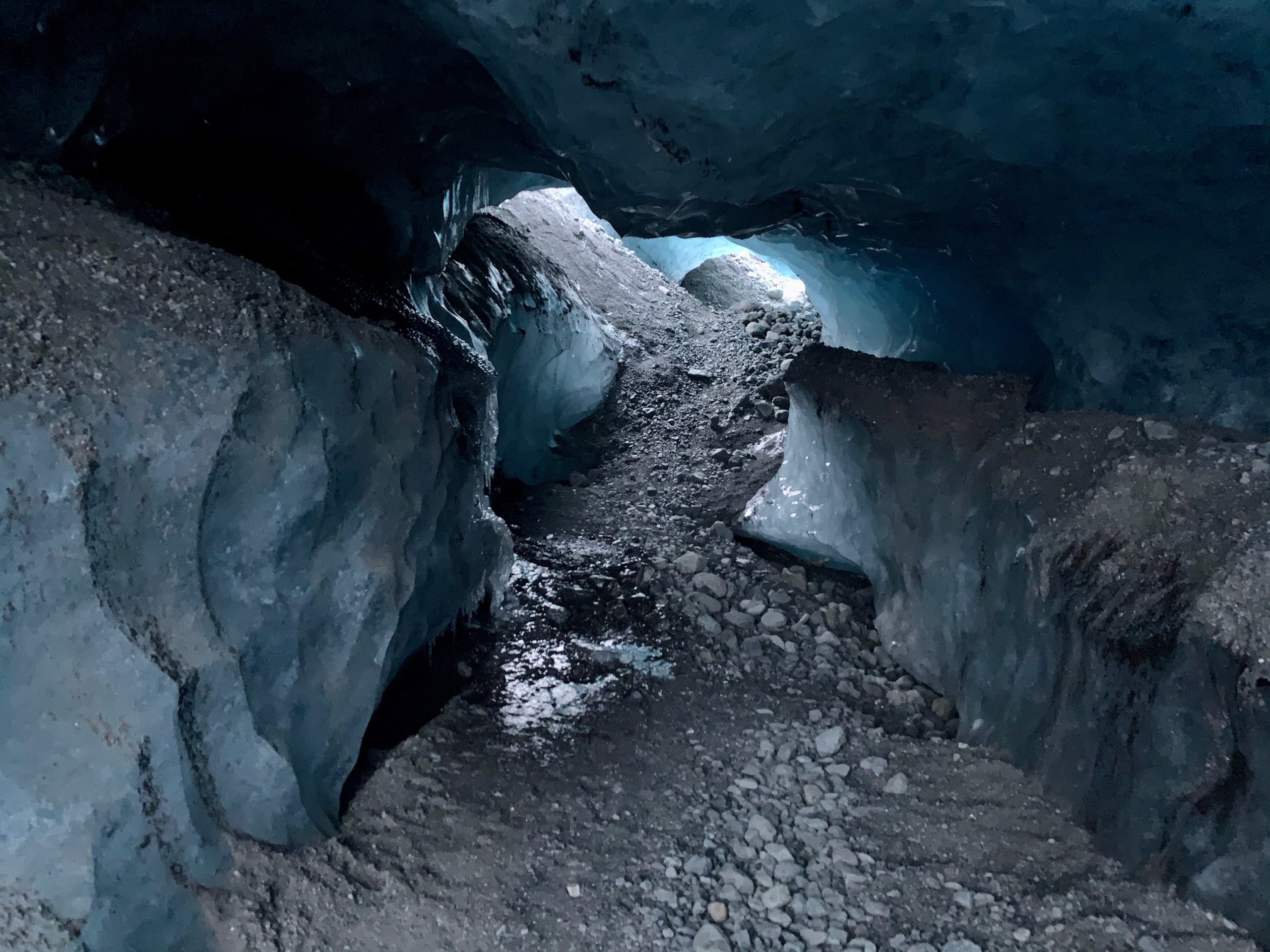
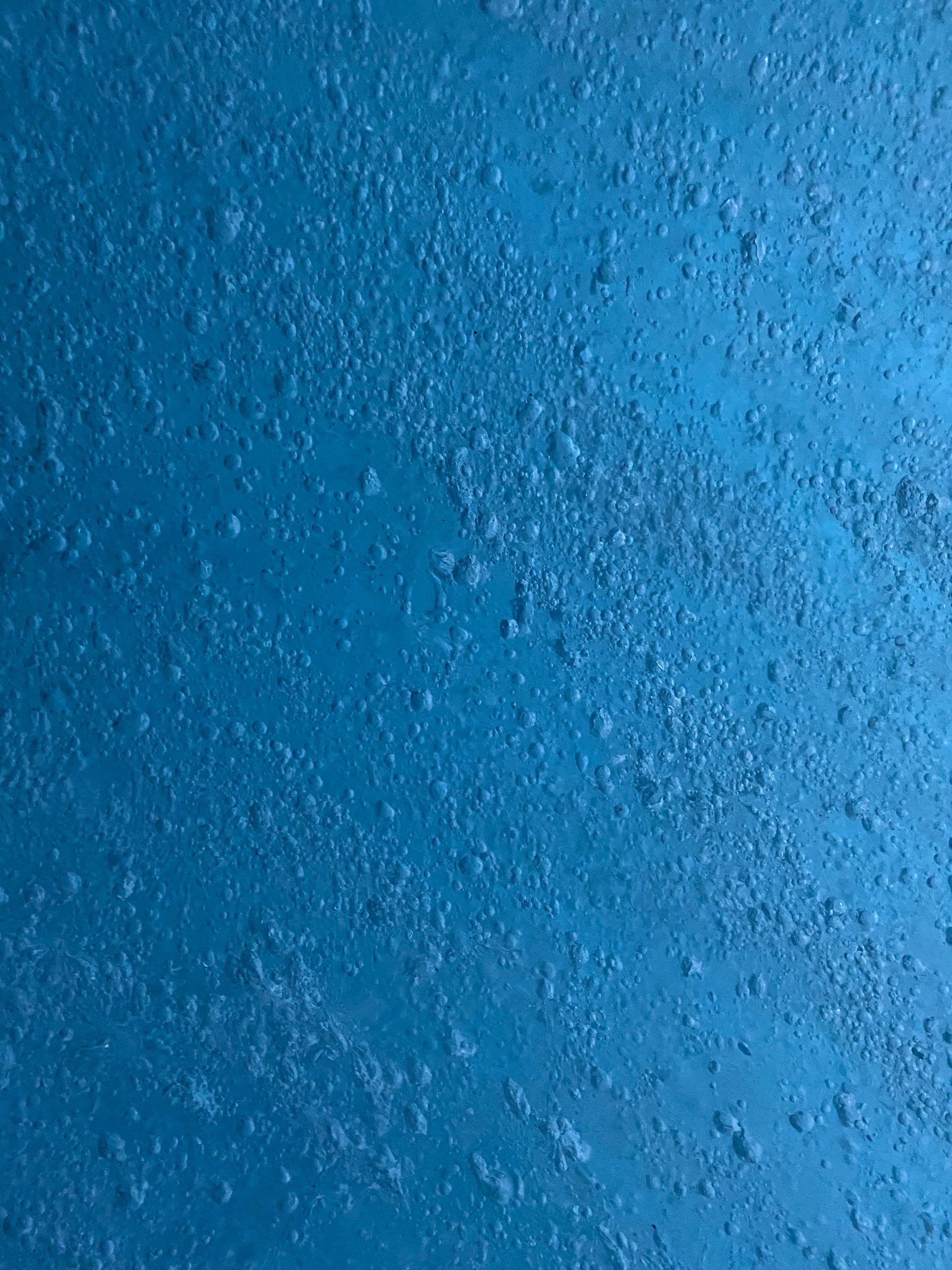
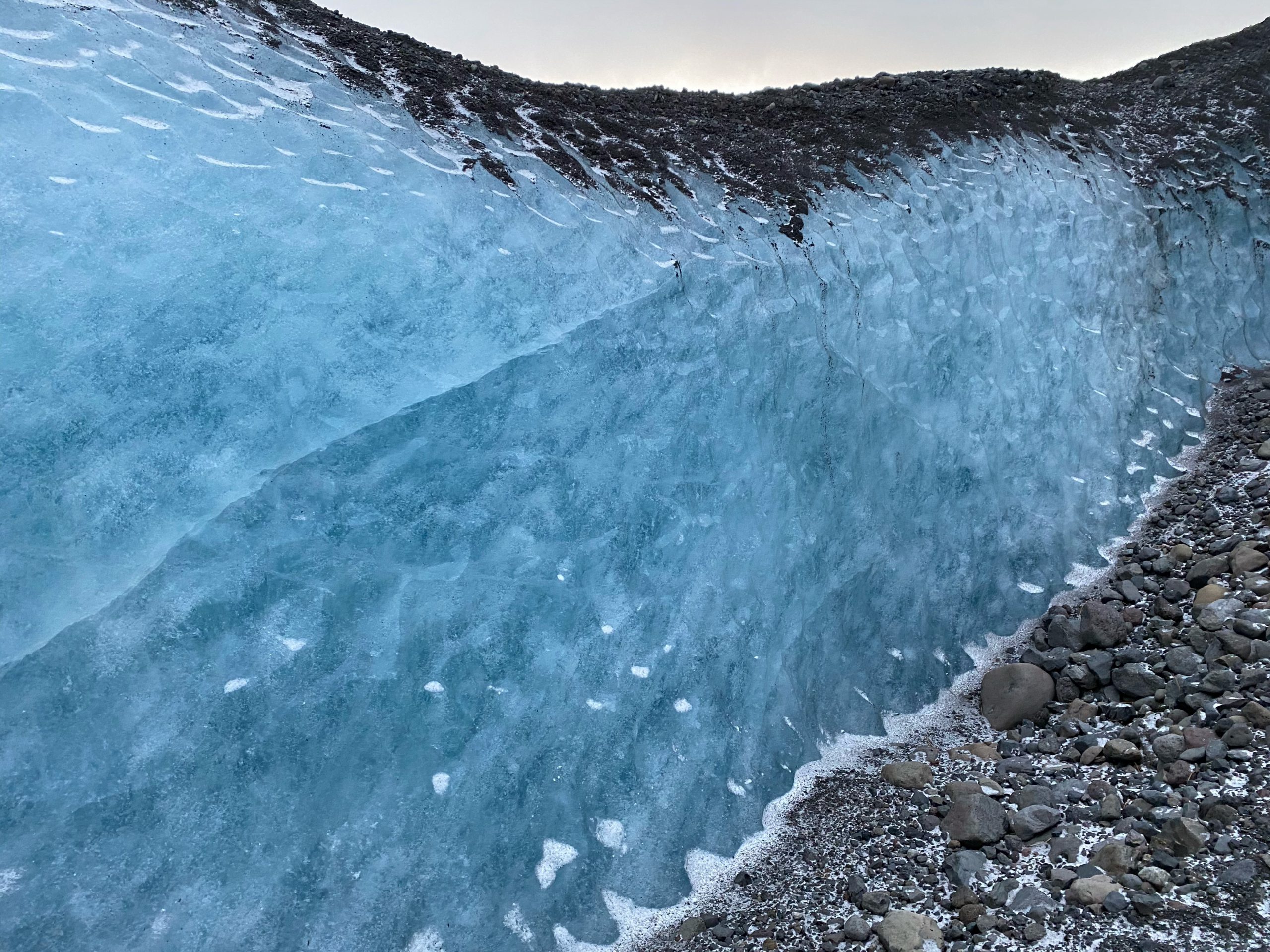
As we moved up the hillside, the wind picked up to well over 100km/h. Grit and dirt were stinging our skin, while we regularly crouched to reduce our risk of being blown off the side. It’s good to have faith in your guide, and we knew that it must have been bad when they decided the hike on the glacier itself would be too dangerous.
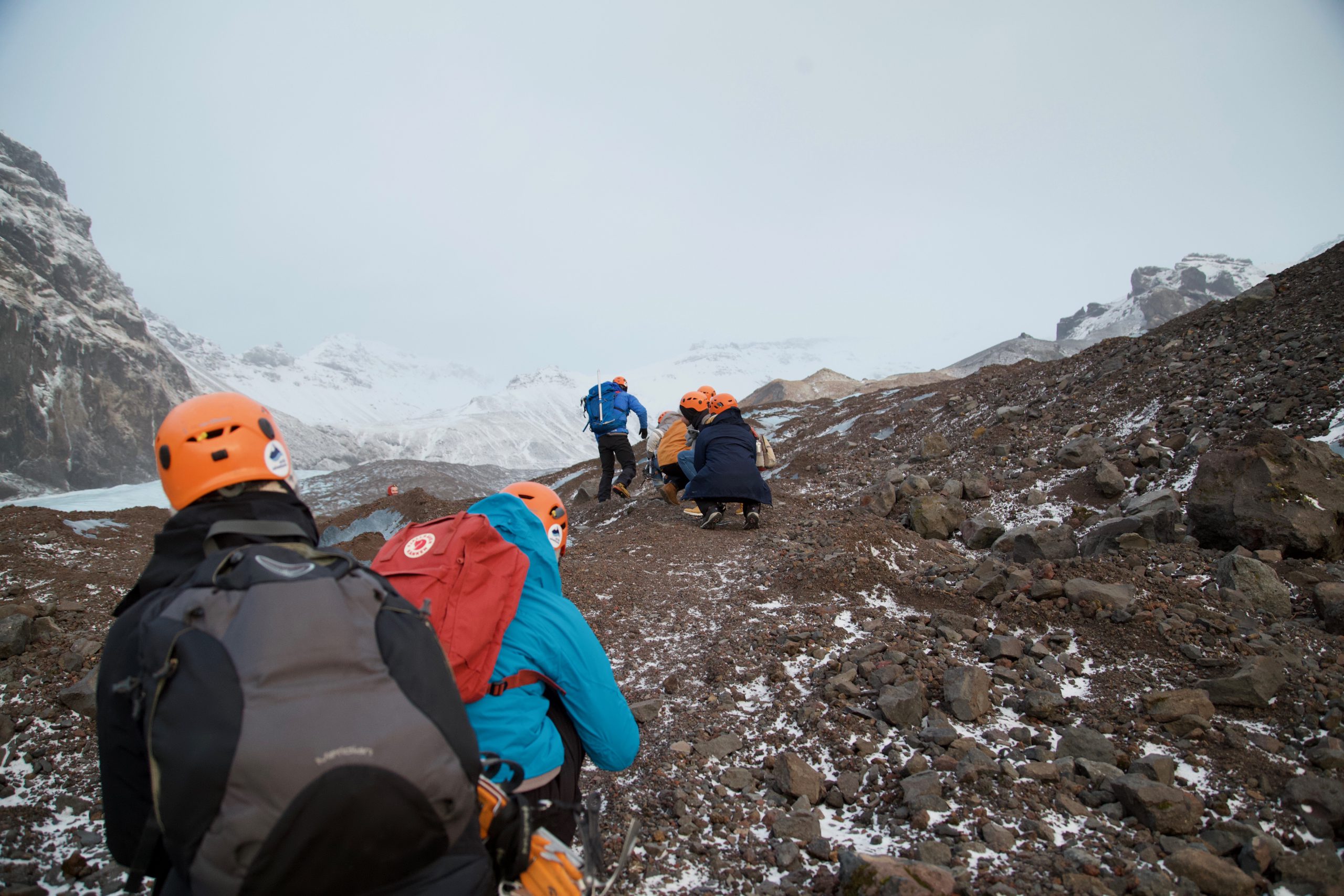
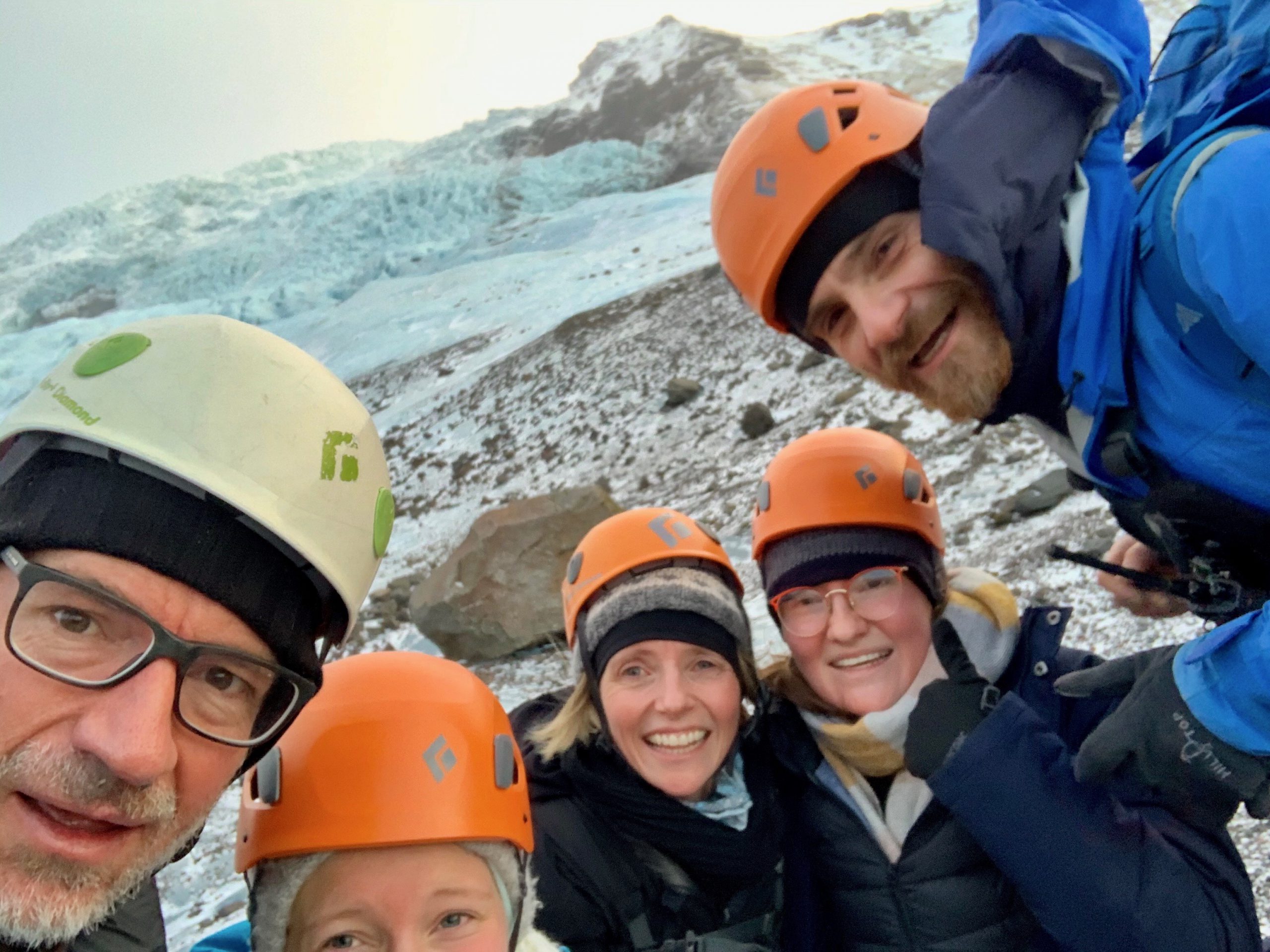
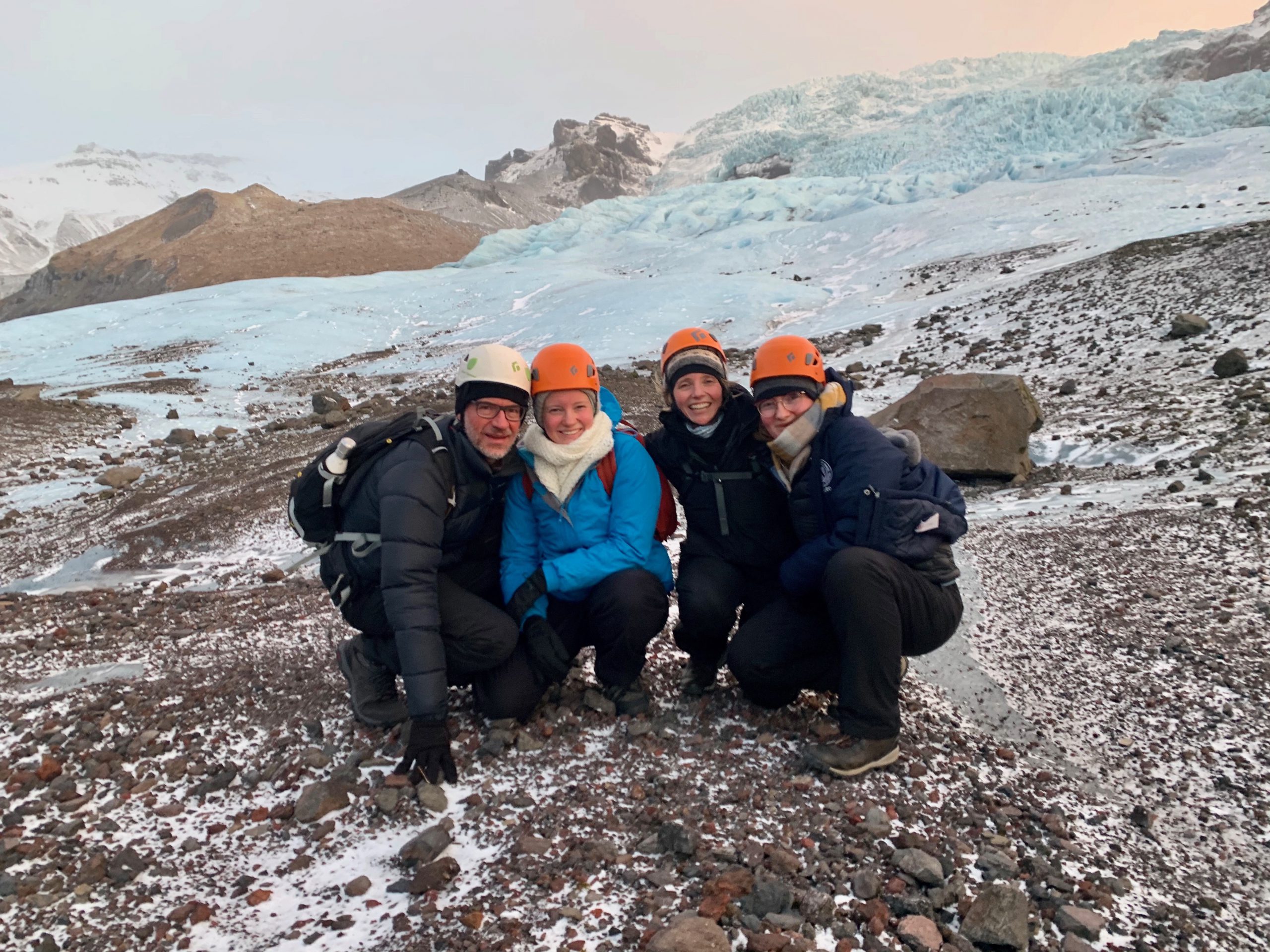
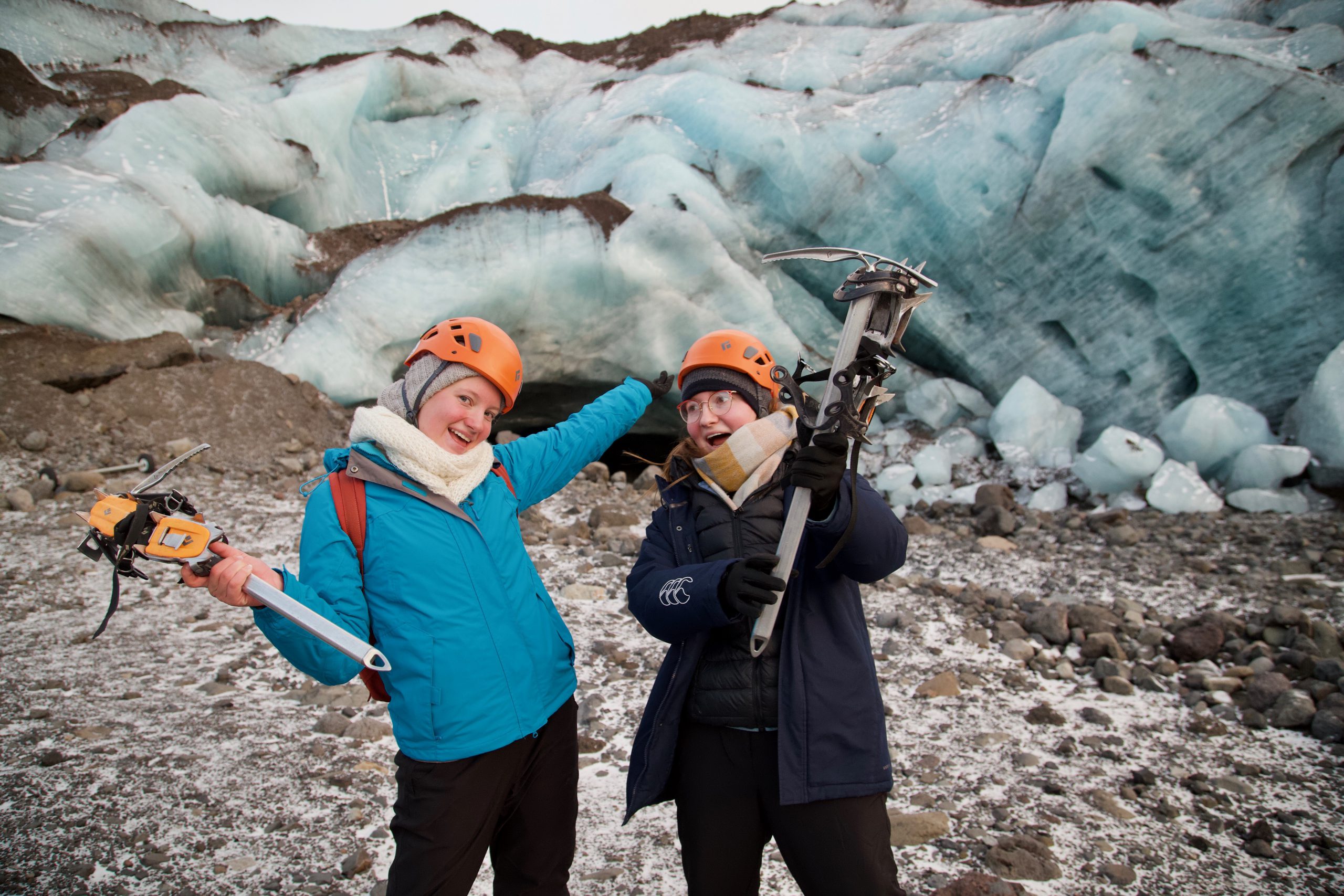
The ice cave was considered a ‘dead’ part of the glacier, meaning that it had detached from the main glacier, and was therefore no longer moving. Our guide, Martin, pointed out that the glaciers are disappearing at a rapid rate – this glacier will have disappeared in 90 years, while the glaciers that cover 14% of Iceland will all be gone in 250 years. The damage has been done, and is irreversible.
In the photo below you can see a distinct line where the green turns to grey about 1/3 of the way up the mountain. The glacier reached this line 27 years ago. This brought home just how quickly the change is happening.
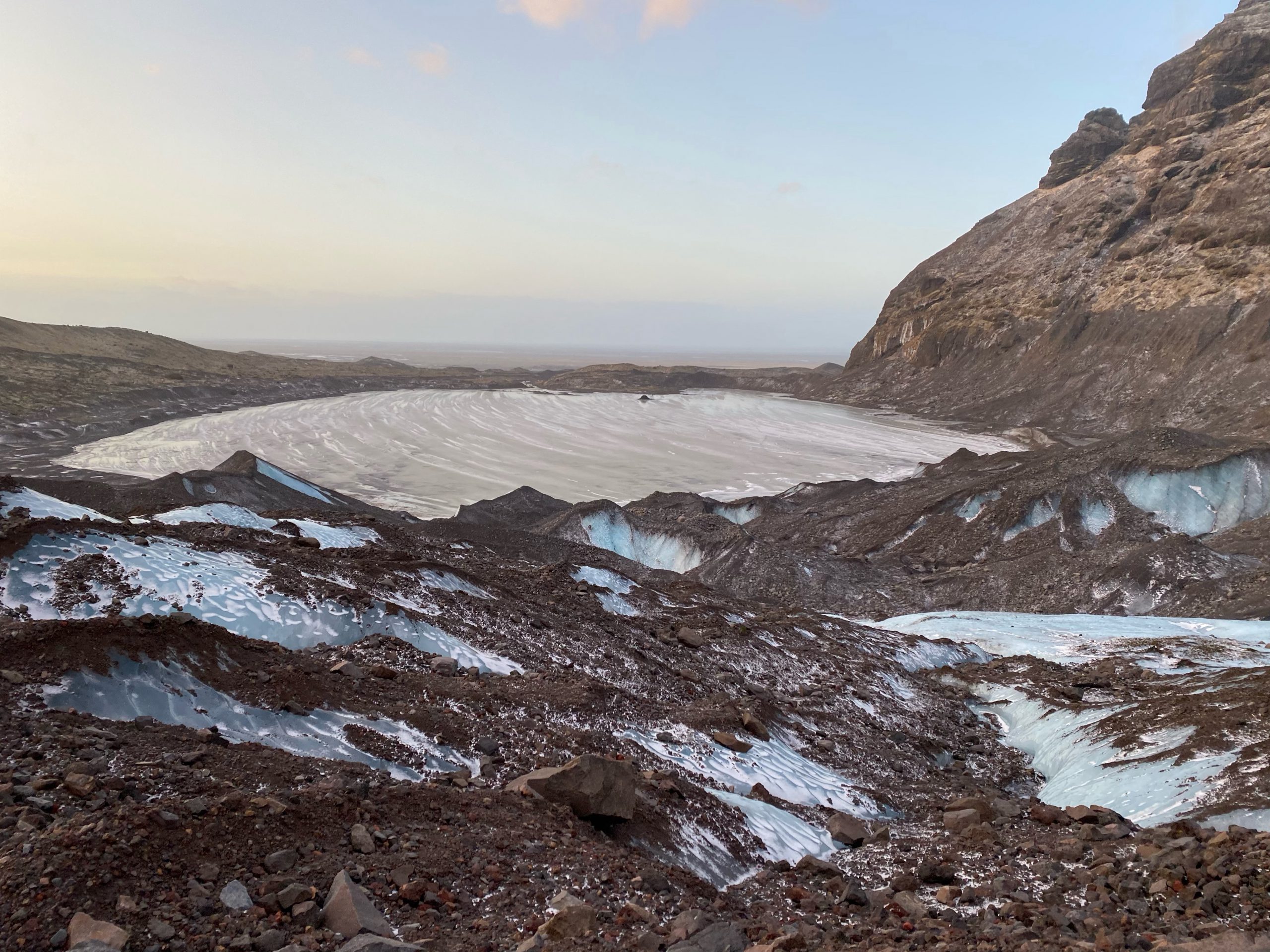
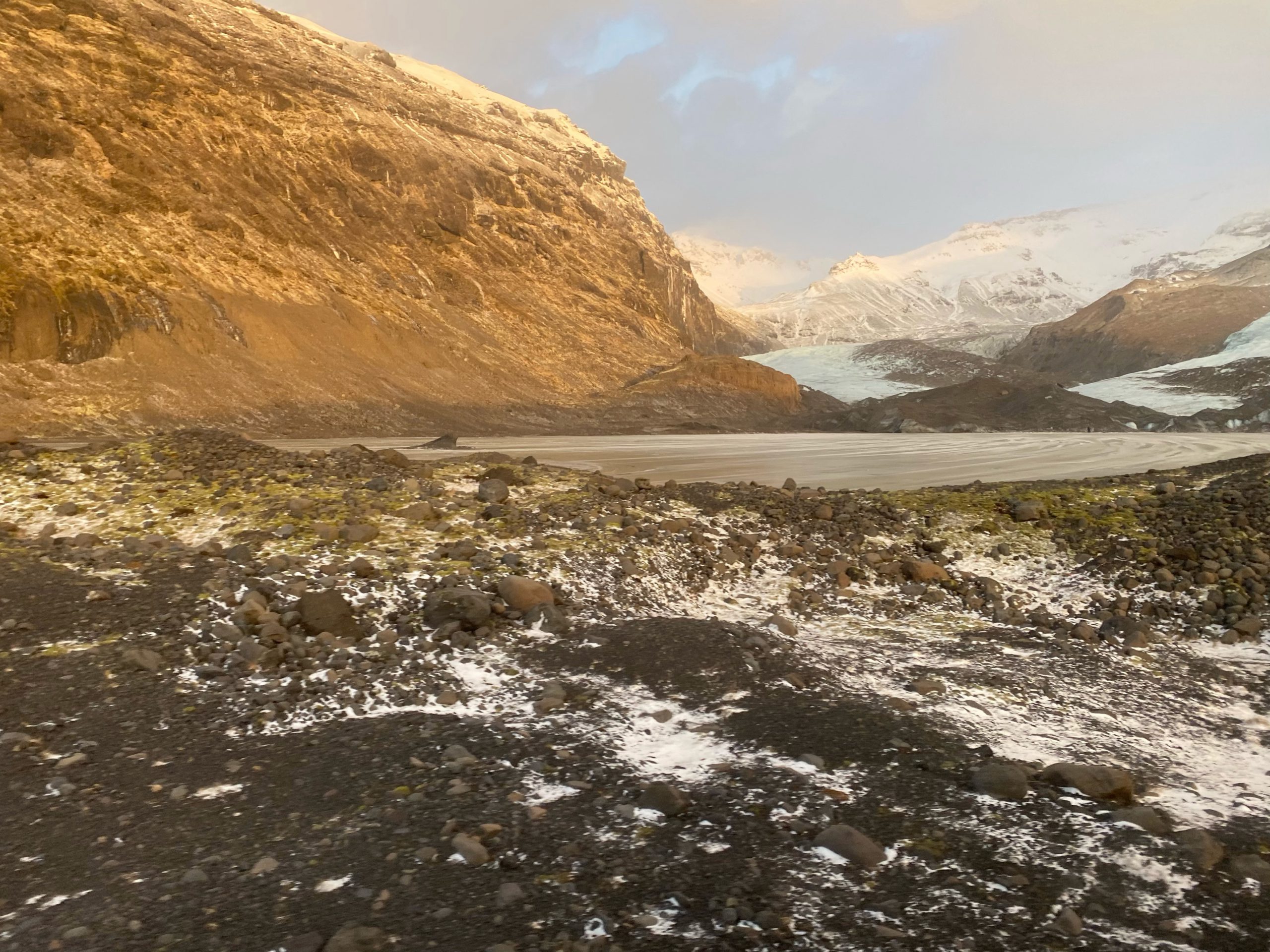
The name Faljoköll means ‘Falling Glacier’ in Icelandic. The glacier can move up to 1 metre each day, and years ago, the local farmers would hear great crashes. Eventually they worked out that it was the 30m ice towers breaking from the top, and falling to the ground… hence the name.
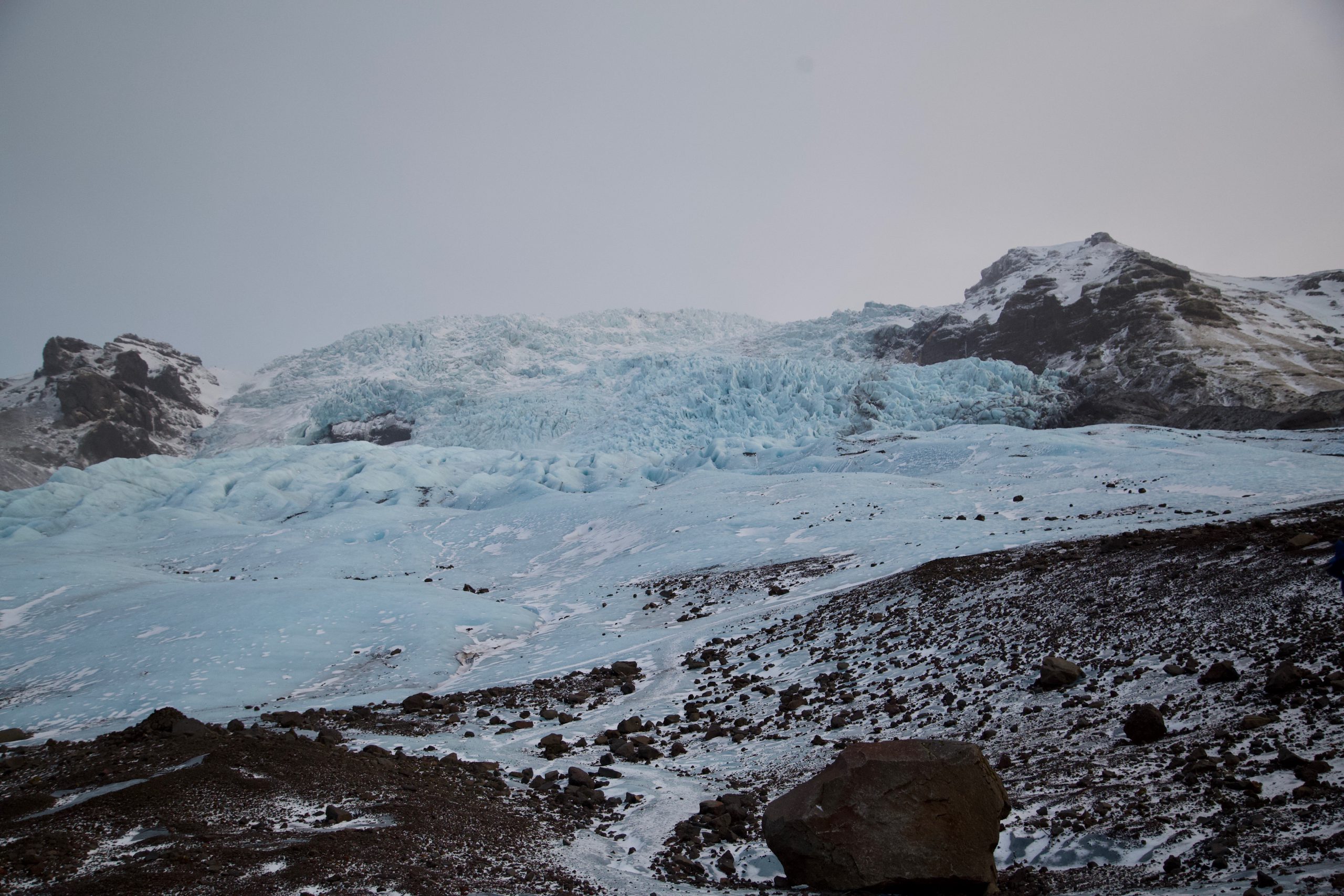
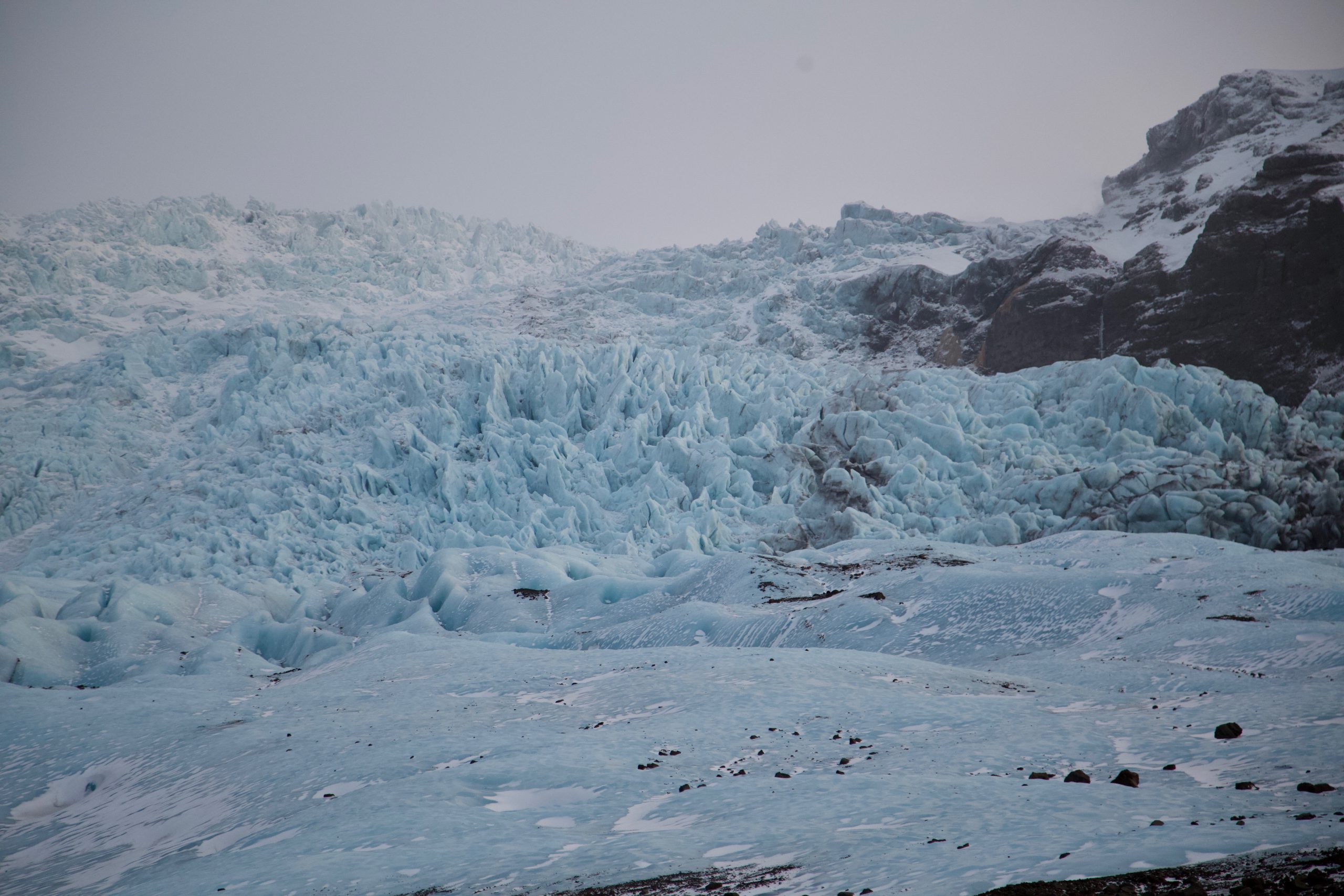
Seeing the glacier, and hearing about the changes it has already been through had a huge impact. The damage we have done, and continue to do, is horrific. Every one of us needs to think about the impact we have on our planet every day and consider ways to reduce it.
In front of the glacier is ‘the biggest space of nothing’ in the world, along with Iceland’s first settlement, Svina. The lava fields from the Laki volcano in 1783 cover the whole south of the country. It’s barren, but was the home to the first people to land here, exiled from Norway.
Also in the region is Öræfajökull, one of the most active volcanoes in Iceland. It is also well overdue for an eruption – predicted in the next 12 – 18 months.
Our next stop was at Jökulsarlón, a large glacial lake that developed after the Breiomerkurjökull glacier started receding from the edge of the Atlantic Ocean. Huge icebergs were floating in the lake, being blown back against the tide due the to the wind. Photos don’t do the environment or the experience justice. It was simultaneously harsh and stunning.
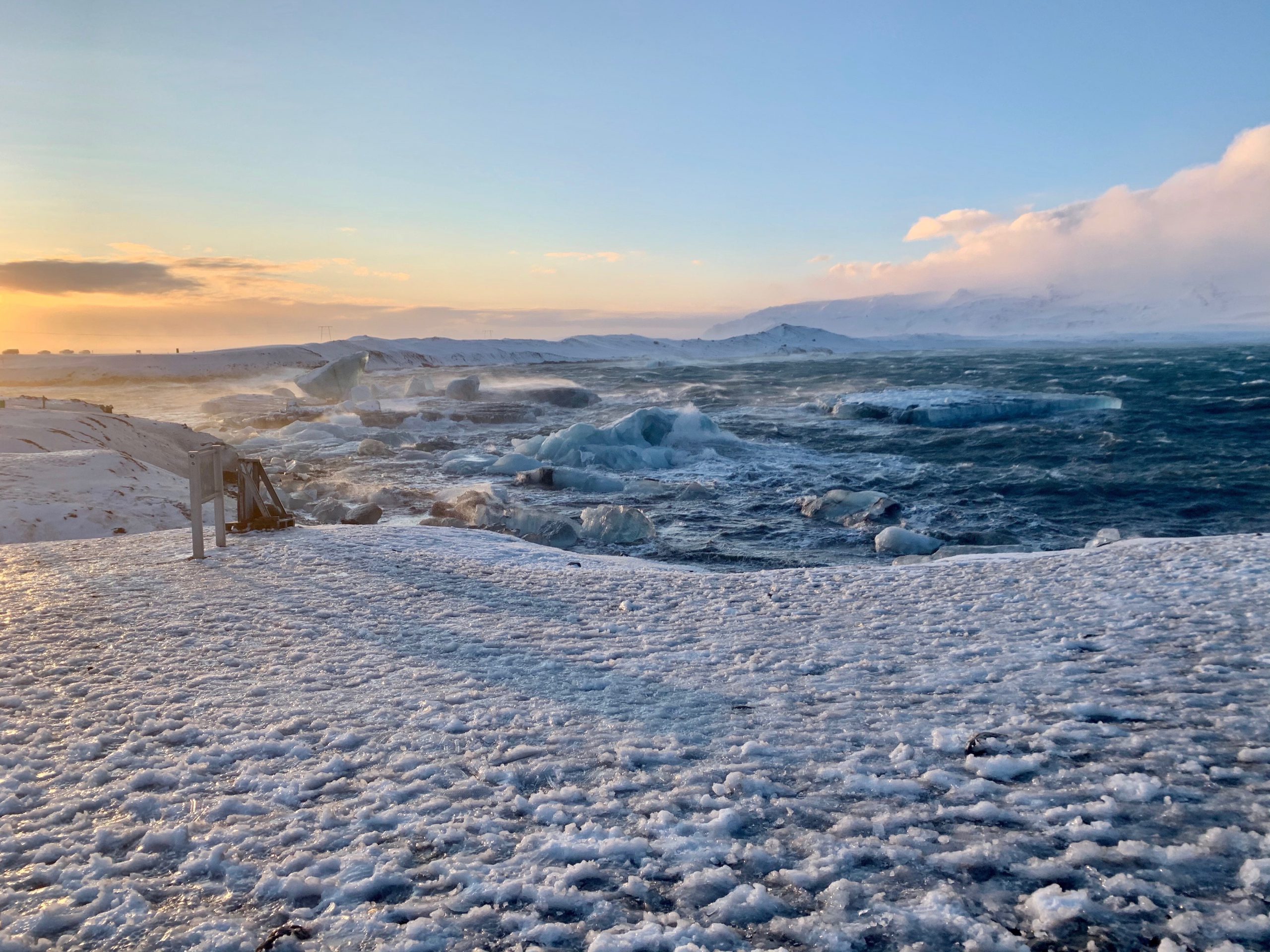
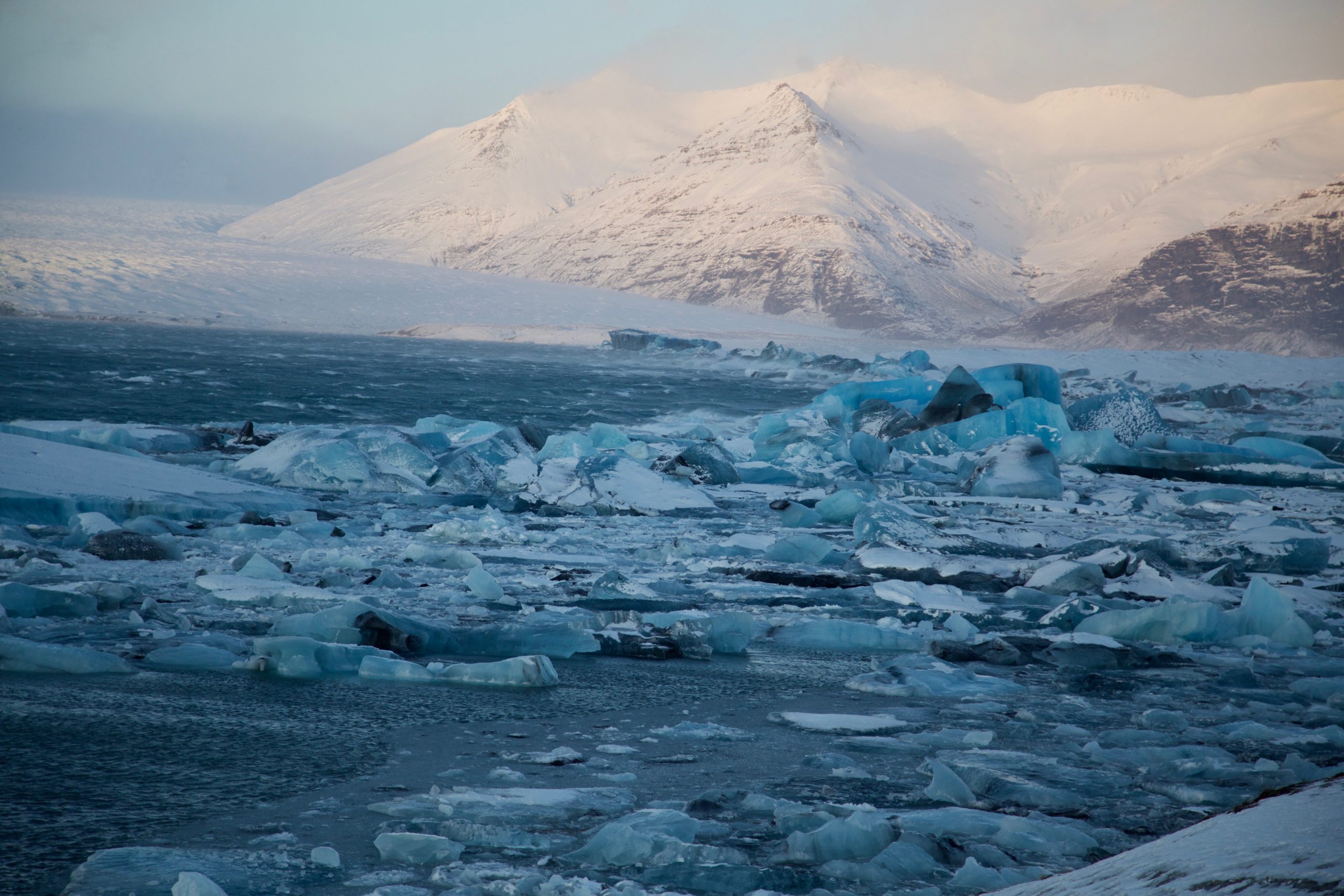
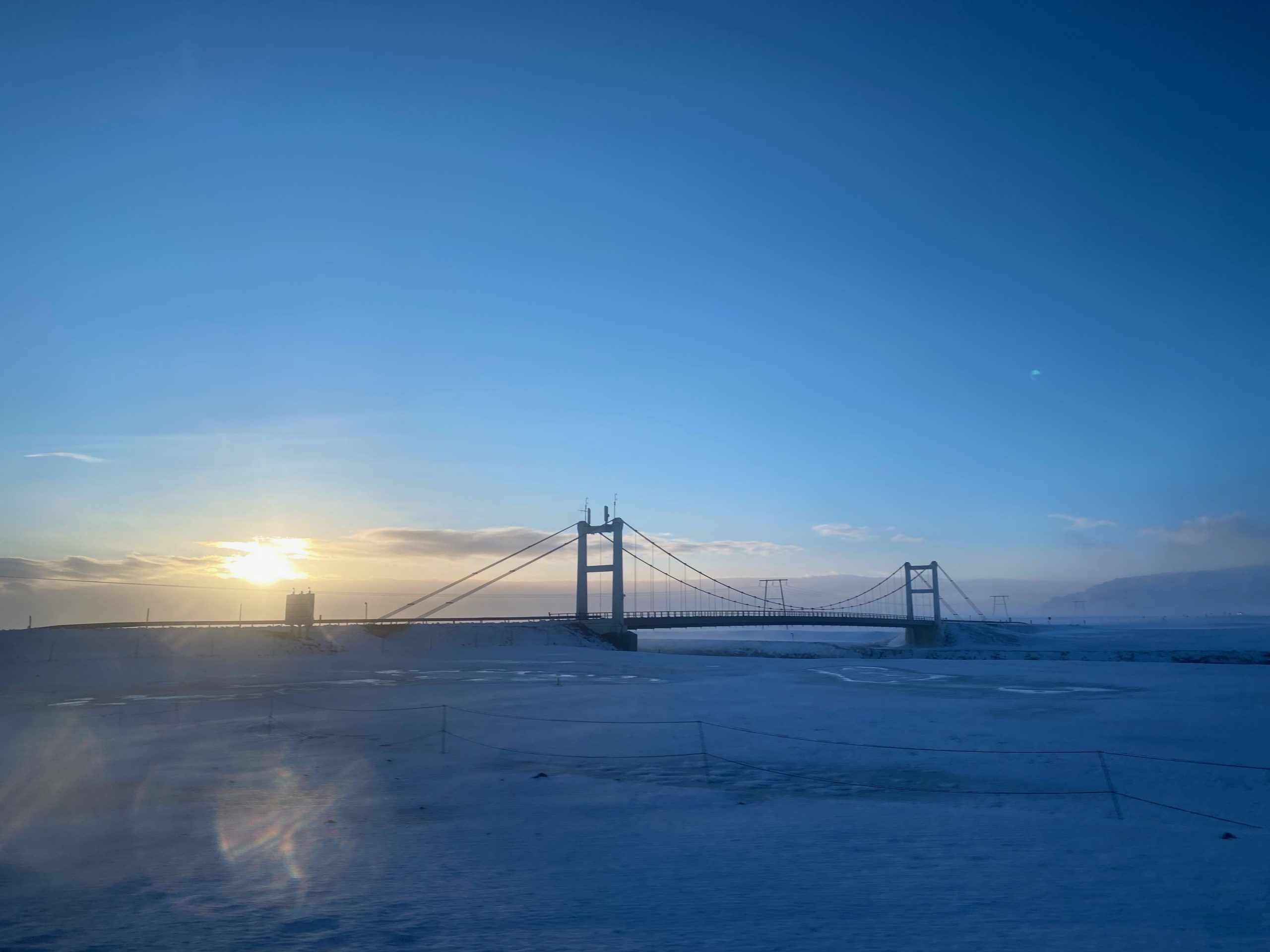
As the sun set, we moved over to Diamond Beach, named for the huge blocks of ice that wash up on the shore. The black sand provides a contrast, while powerful waves splash and move the blocks. The sun glistened through the ice… what a way to finish a day that was already filled with stunning landscapes.
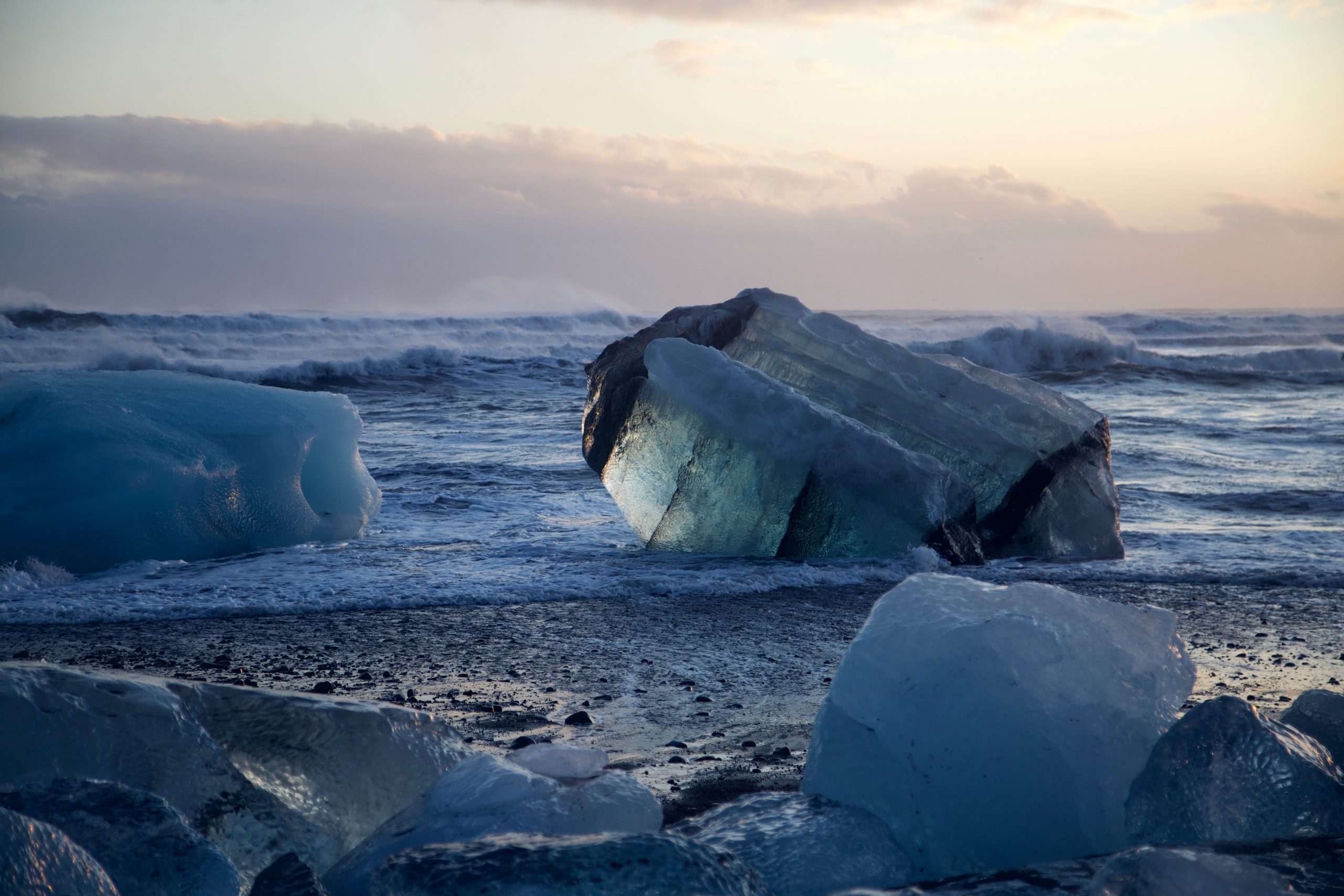
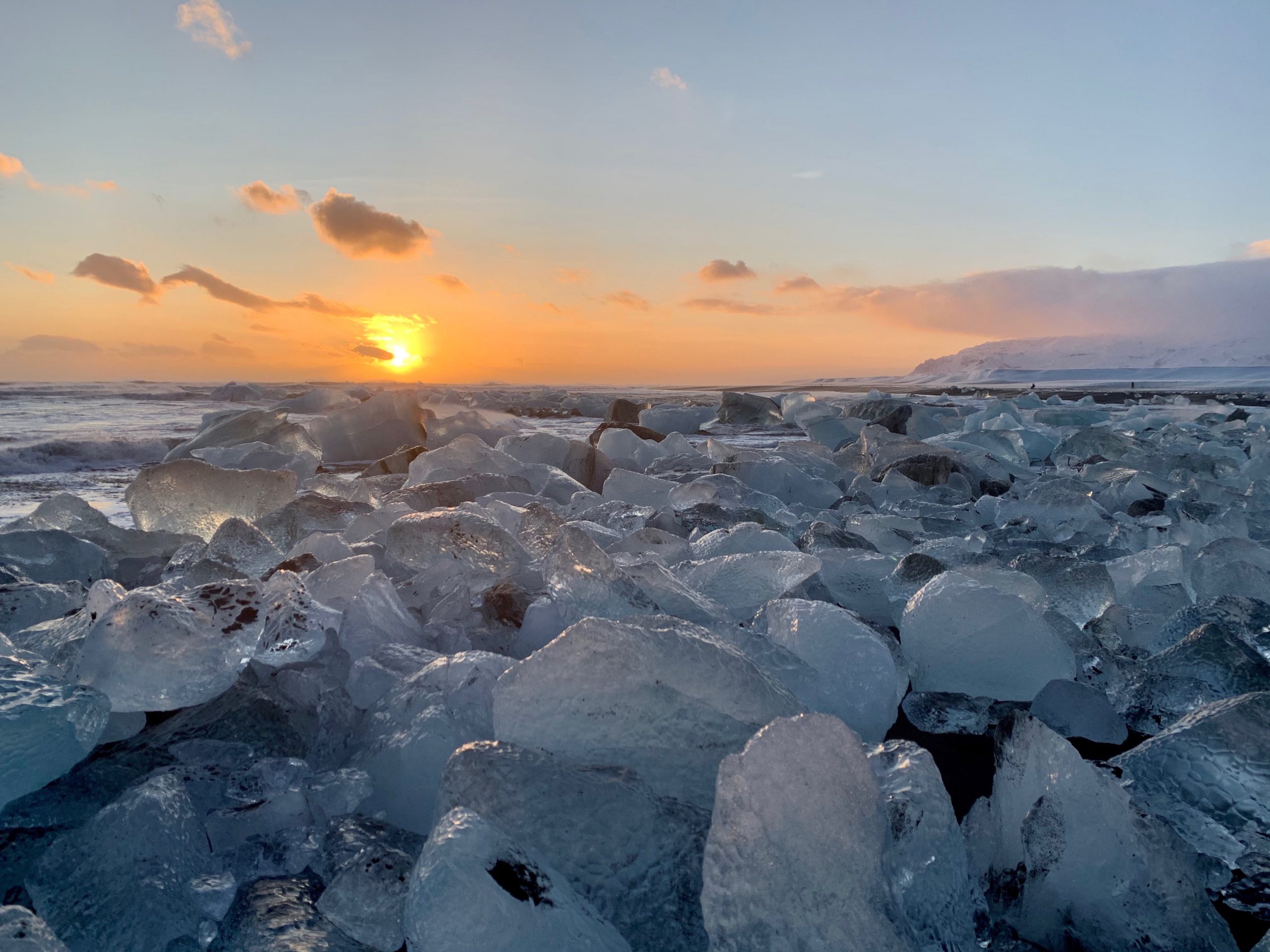
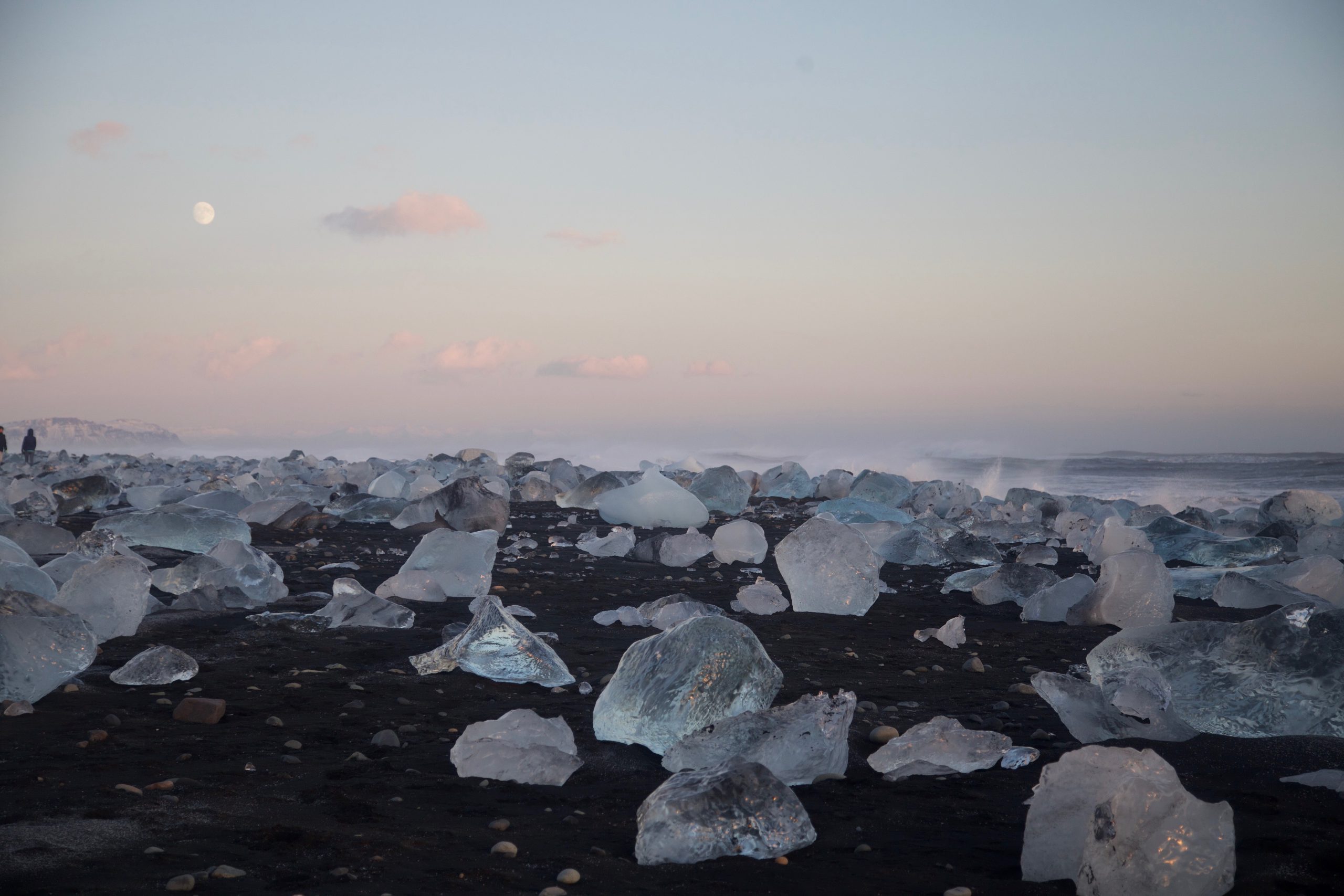
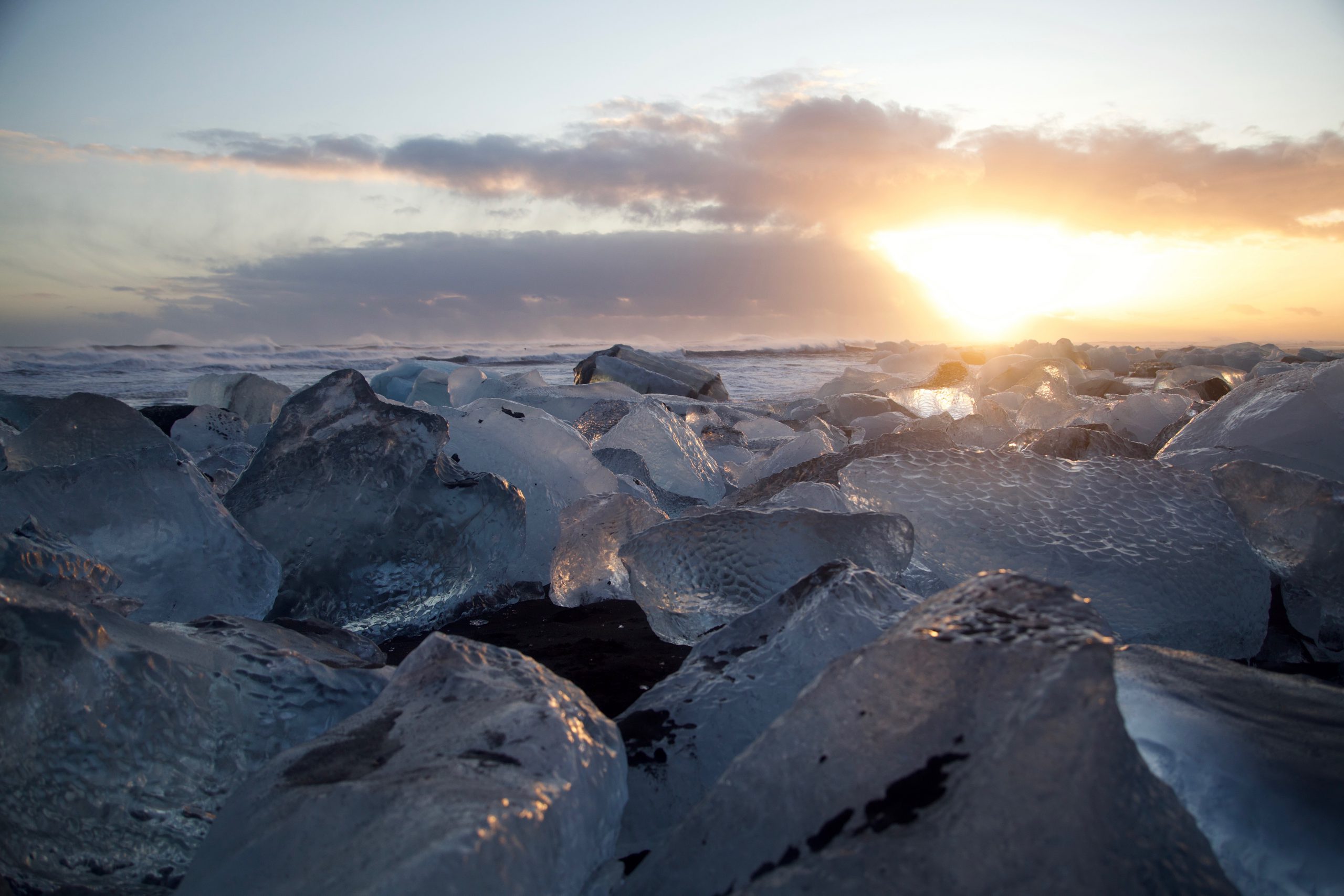
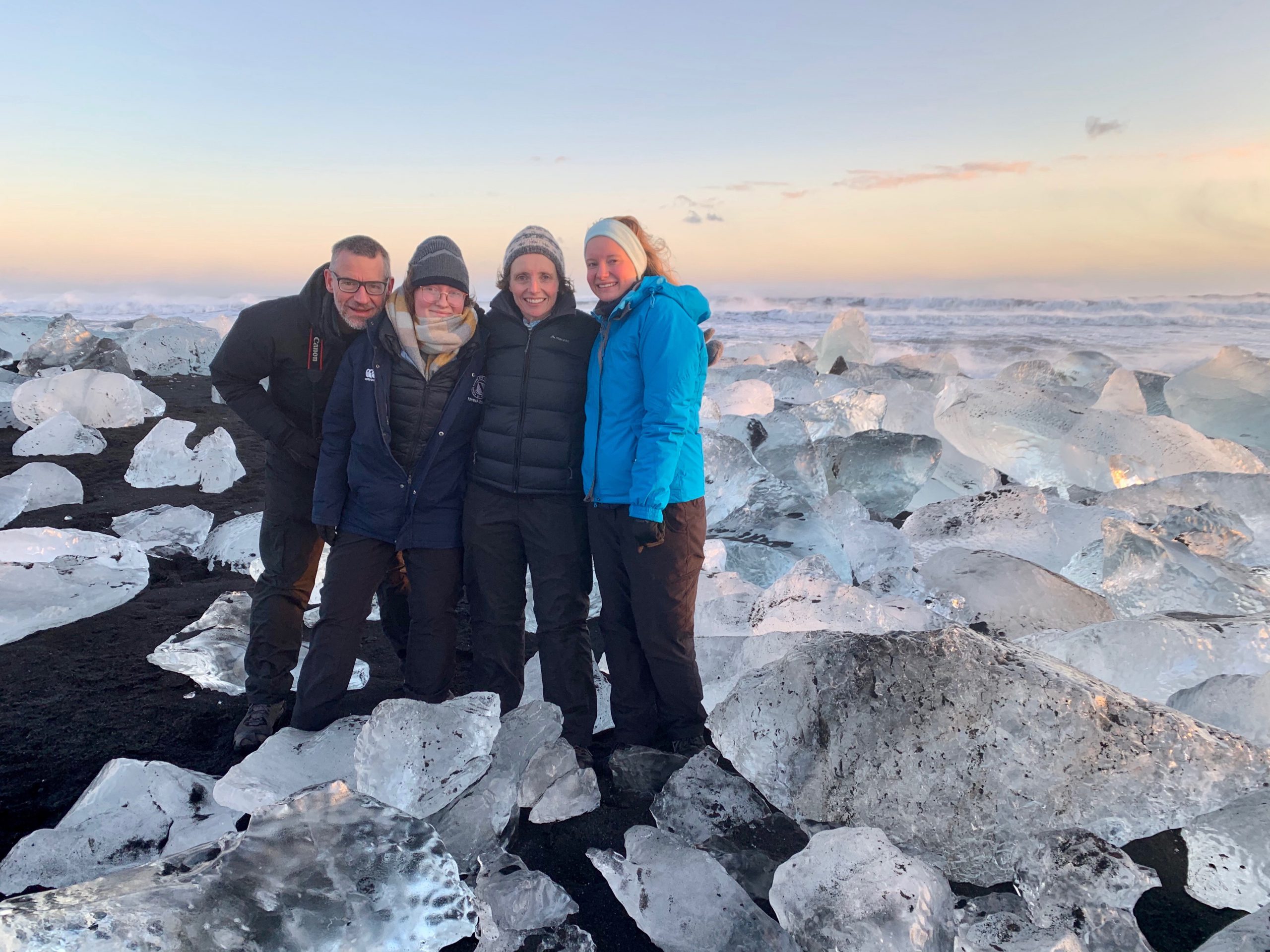
Without question, today was one of the most memorable of the trip, and of all our trips in recent years. The stunning landscapes, brutal conditions, and understanding that this will not last forever had a significant emotional impact on all of us.
Magnificent Iceland, truly magnificent.
Love M & theBunch x
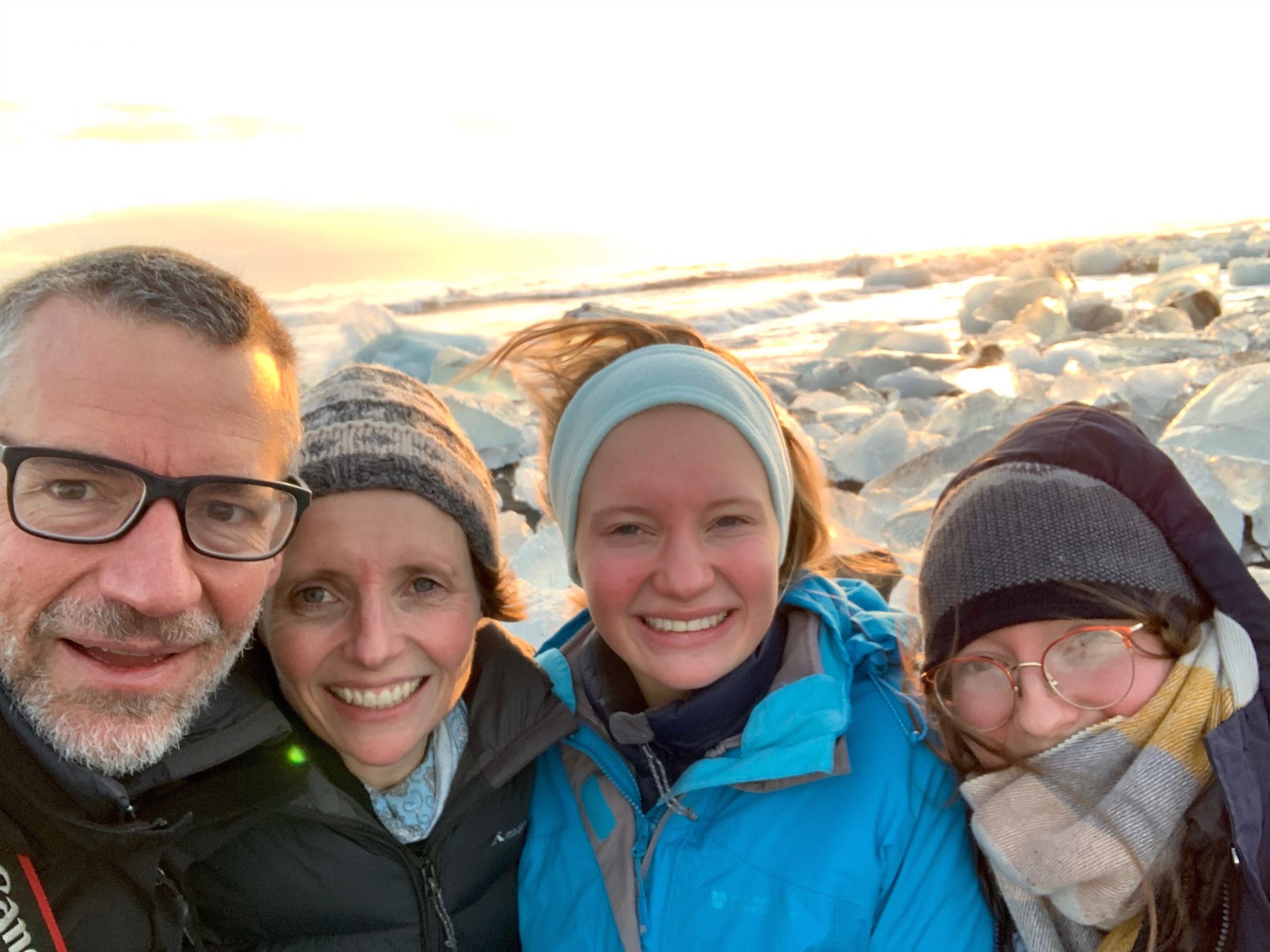
Sun: 10:49-15:48
Temperature: -2 to -4 (apparent -12) Wind: 60km/h, and well over 100km/h at the glacier and lake. Insane!
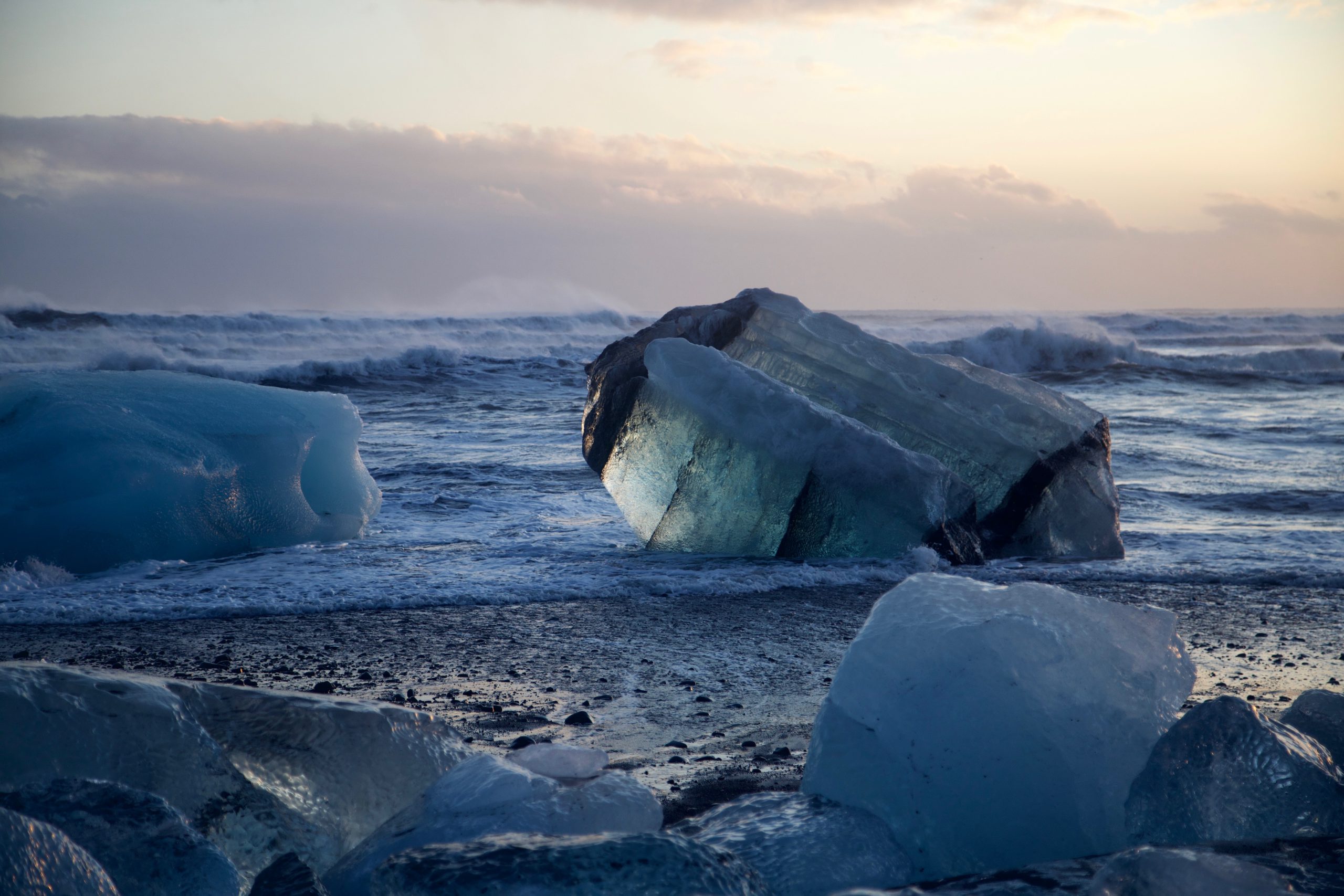
Comments are closed